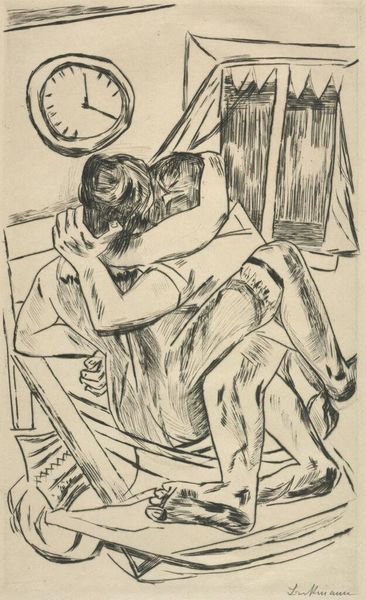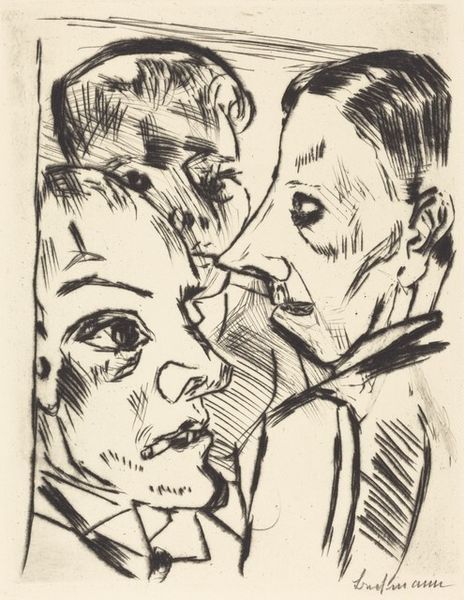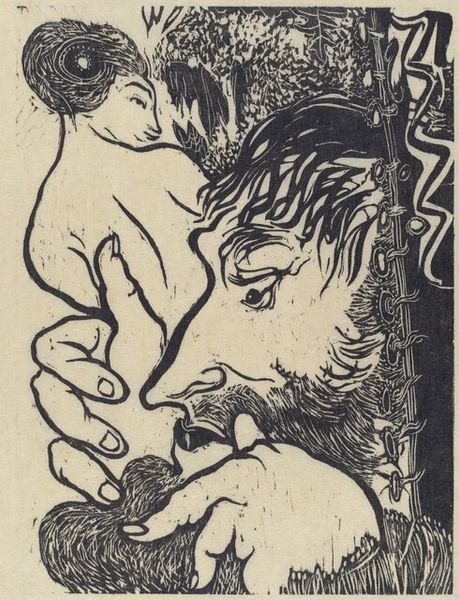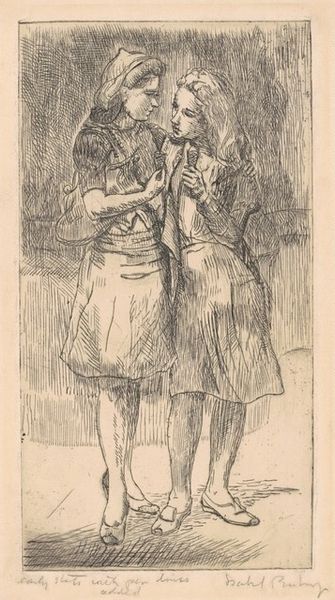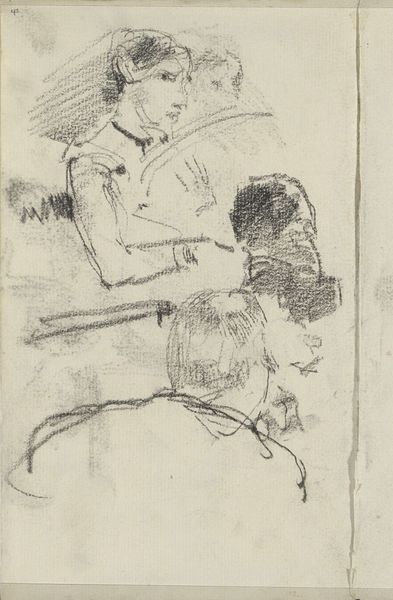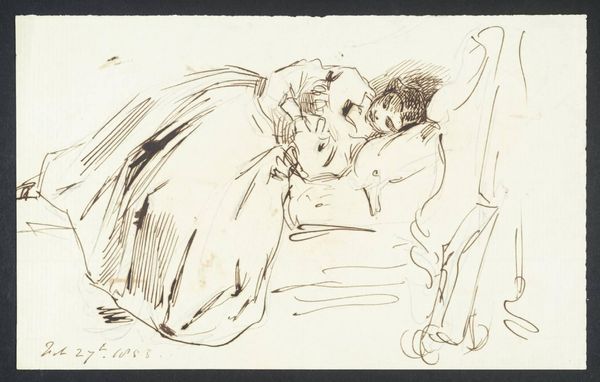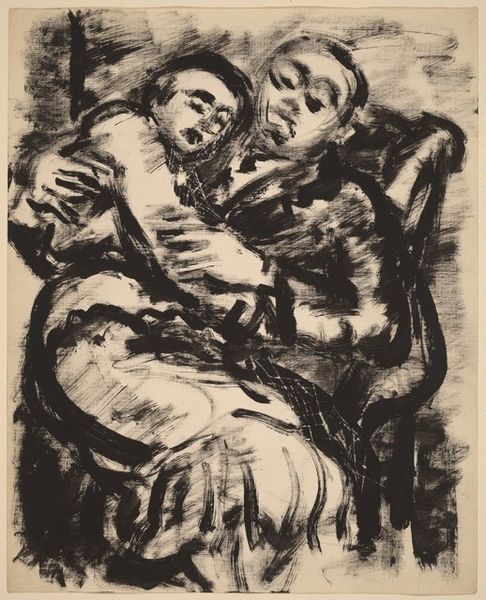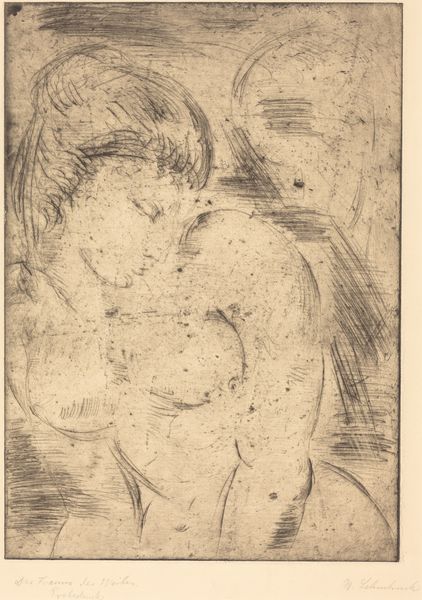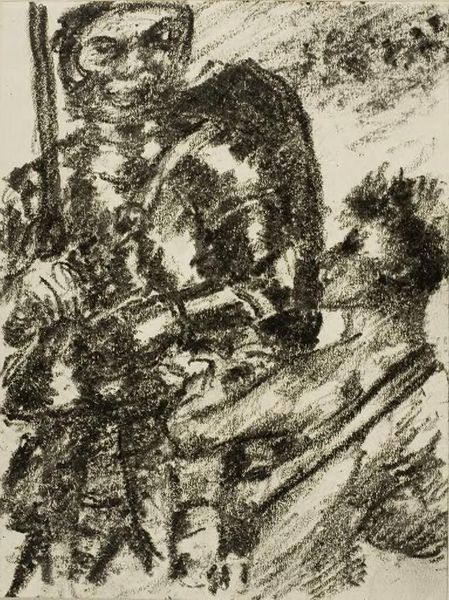
drawing, print, etching, ink
#
portrait
#
drawing
#
narrative-art
# print
#
etching
#
german-expressionism
#
figuration
#
ink
Dimensions: plate: 32.9 x 22.5 cm (12 15/16 x 8 7/8 in.) sheet: 45.5 x 28.2 cm (17 15/16 x 11 1/8 in.)
Copyright: National Gallery of Art: CC0 1.0
Editor: We’re looking at "Fortune Teller" by Paul Kleinschmidt, made in 1922. It’s an etching, so printed in ink on paper. There’s something so uneasy about the figures, like a snapshot of a clandestine meeting. What catches your eye? Curator: What strikes me is how this image reflects the social anxieties of the Weimar Republic. The work dates from a period of intense social upheaval. Notice how Kleinschmidt depicts the figures? They aren't romanticized; there's a deliberate awkwardness. Editor: Yes, their faces and gestures feel exaggerated. How does this contribute to our understanding of the piece? Curator: In German Expressionism, artists often distorted reality to convey emotional intensity and psychological states. The fortune teller archetype, prevalent in popular culture, gained new resonance amidst the widespread uncertainties of the post-war period. Art like this speaks to the public’s grappling with disillusionment and their turn to mysticism and fortune telling to make sense of a collapsing world. Editor: So, the act of fortune telling becomes a symbol for a society trying to find its footing? Curator: Exactly. And think about the setting, rendered with such sparse lines. It's not about realism, it’s about conveying a sense of instability. Do you notice how the style echoes anxieties about truth, performance, and belief circulating at the time? Editor: I see what you mean. Before, I just saw an awkward scene, but now I see it as a commentary on an anxious and disillusioned society turning to occult practices in uncertain times. Thanks. Curator: And I hadn't considered so directly how it echoes contemporary struggles to make sense of chaos and to perform belonging. It's fascinating how historical context shapes and reshapes art, isn’t it?
Comments
No comments
Be the first to comment and join the conversation on the ultimate creative platform.
